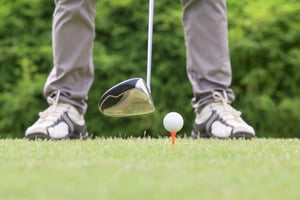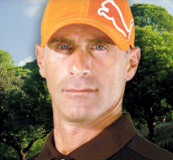2. Reduce the Chance of Injury
3. Improve Balance
If you've read any of my blogs, seen me on Golf Channel, or read my book "Fix Your Body, Fix Your Swing," then you know that when I talk about the golf swing, I'm talking about an action that involves just about every part of the body.
Sure, there are the big players that you hear about a lot when it comes to golf fitness and golf strength and conditioning -- your legs, your hips, your core, your back -- but then there are the smaller role players that don't get much attention, despite helping to develop a solid golf stance.
The 4 Corners of Your Feet
A controlled swing and a good golf stance starts with awareness of your feet and how they interact with the ground. More specifically, you should be aware of the 4 corners of your feet:
- Ball of your foot
- Base of your little toe
- Outside edge of your heel
- Inside edge of your heel
There are simple exercises that can be done to help you connect (or reconnect) your Golf Body with your Golf Feet. The goal of the exercise is to reach a point where you can keep your core centered, maintaining a balanced stance from your feet to your hips.
Another one of the smaller, often overlooked, role players is the ankle.
Ankles Aren't for Rolling
I bet you never thought a whole lot about ankles until Tony Finau rolled his before the day before the Masters.
In case you missed it, Finau drilled an eagle at the par-3 event on the Wednesday before the Masters. While running down the fairway to celebrate, he horrifically rolled his left ankle. The video -- while not quite on par, gruesome-wise, with those of the basketball injuries to Gordon Hayward and Paul George -- is still pretty nasty. Ankles aren't meant to support all of one's body weight when bent sideways at 90-degrees.
So, what did Finau do? He rested it, iced it, and taped it. Then he went out and finished tied for 10th at the Masters, pocketed a $286,000 paycheck, and then posted pics of his swollen ankle.
The ankle is one of the more complex joints of the human body. While not allowing quite as much movement as omni-directional joints like the hips and shoulders, it allows for far more range of movement than, say, the knee or elbow.
Mobility, or Stability?
Unfortunately, all that range of motion comes at a cost. Generally, the more mobility there is around a joint, the less inherent stability there is. A proper golf stance, and the golf swing, both require high doses of both mobility and stability around the ankle joint.
Think about your swing. If you're a right-handed player, you load a lot of weight into the outside edge of your right foot during your takeaway and into your backswing. As your energy moves toward your target during your downswing and through impact, the weight now shifts to the inner edge of the right foot before the foot starts to internally rotate and you end up on the ball of your right foot with toes facing your target. That's a lot of work.
The left ankle for a right-handed player is all about stability and braking. As you transition from your downswing through impact and into your follow-through, weight shifts quickly to the outer edge of the left foot.

The left ankle must be stable enough to absorb all that momentum and strong enough to hold you in place as you finish your swing.
If there isn't enough strength, mobility, and stability around the right ankle, you won't be able to generate a maximum amount of push-off and rotation and this will negatively impact your power and distance. If there isn't enough strength and stability in the left ankle, you'll either subconsciously slow your swing down prematurely to prevent finishing off-balance or -- more probably -- you'll just finish your swing off-balance, which will affect your accuracy.
Ankle Strengthening
The good news is that the muscles around the ankle -- just like most of muscles of the body -- can be strengthened if trained properly.
Of course, you’ve never heard anyone saying that they’re going to the gym to strengthen the muscles around their ankles. (Okay, if you’re a serious gym rat, you might have some calf exercises you like, but that’s only a partial fix. The calf muscles are located on the back side of the lower leg. Muscles that move and stabilize the ankle joint are on the front and sides of the lower leg, as well.)
Working the muscles around the ankle doesn’t make for the flashiest workout in the world. It won't make you look any better in your favorite golf shirt. (There's an outside chance it'll make you look a little more jacked in your favorite pair of socks.)
However, by working the muscles responsible for movement and stability at your feet -- the gastrocnemius, soleus, peroneals, and both the anterior and posterior tibialis -- you'll not only be improving your power and accuracy, but you'll also be helping prevent injury down the road (just in case you have to do your own hole-in-one celebration).
Check out my video below to get started with stabilizing your golf swing and improving your golf stance.
© joeydgolf.com 2018


